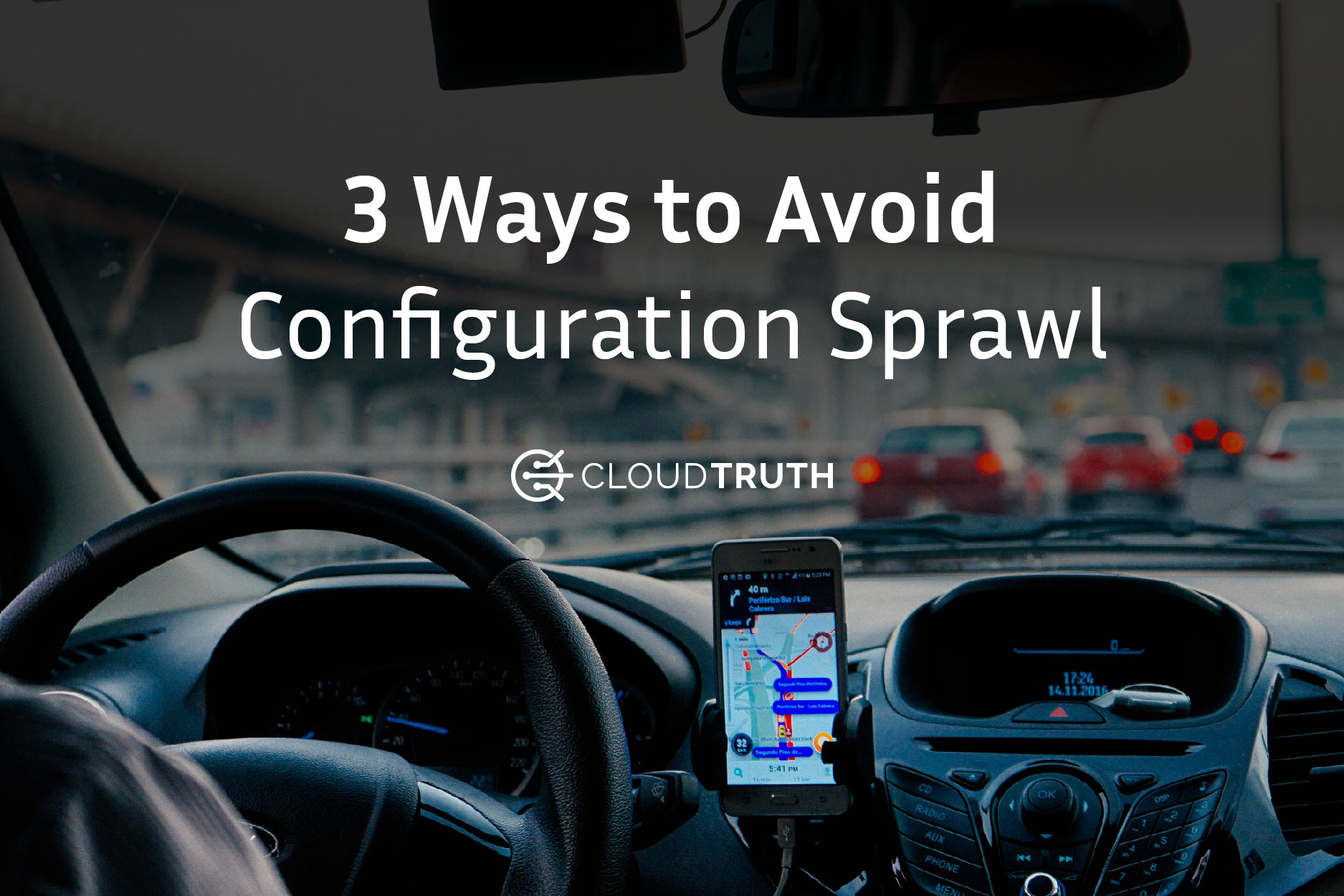- Platform
- Why Us?
-
- Trusted by leading enterprise engineering teams.
- Enterprise-level support from config, IaC & cloud experts.
- Hosted on your platform or ours.
- Sync your config from anywhere.
- Our Mission
- News
-
- Trusted by leading enterprise engineering teams.
- Enterprise-level support from config, IaC & cloud experts.
- Hosted on your platform or ours.
- Sync your config from anywhere.
-
- Pricing
- Resources
- TruthTalk
How Can You Avoid Cloud Configuration Sprawl?
October 21, 2022

In the early days of cloud-based software development, engineering teams built their own tools to manage build, deploy, and runtime configurations. From design to deployment, home-grown tools were "good enough" to support product delivery needs since the configurations weren't all that complex. Fast forward to today, and the world of configuration management, with increasing sprawl, looks entirely different.
Faced with increasingly complex infrastructure and application configurations, organizations realize that their DIY tools can't manage the new reality. Additionally, with the meteoric rise of Kubernetes came new configuration complexities that we haven't seen before. And with the shift away from large monolithic applications to microservice architectures, configuration complexity has quickly gotten out of hand.
Overcoming legacy challenges related to configuration management starts with understanding how your cloud configuration became messy in the first place. For many organizations, configuration complexity begins when a combination of team and product scale coincides, leading to decentralized decision-making about managing config because each team chooses different patterns, tools, and workflows.
With added tools and environments that each have their way of being configured, it becomes a significant challenge to achieve a top-down, high-level view of how applications, pipelines, and infrastructure interact with each other. This pain point is known as configuration sprawl, and avoiding it is critical to upholding deployment velocity, security posture, and uptime.
Empowering application and DevOps teams to deploy faster and more reliably equates to more revenue for your organization. Ultimately, simplifying operations wherever possible is the key to avoiding cloud configuration complexity. DevOps teams can't rely on the oral tradition of passing information from senior team members to new hires, just as much as they don't want to waste time chasing one-off configuration patches that should be in code.
Let's review how your organization can untangle configuration complexity for increased deployment velocity, better security posture, and more "joyful" deploys.
Organize Your People
There are infinite approaches to managing configuration, and your DevOps practitioners and managers have different ideas on configuration best practices. Review how teams are organized within your organization and determine which team or member decides how systems should be configured. Small groups working in parallel are great for accomplishing a lot but inadvertently lead to more distributed and decentralized configurations.
For this reason, it's essential to ensure configuration management is a collaborative process that considers the needs of all affected teams. Triaging outages and recovering from unexpected downtime is much easier when silos exist between DevOps, application developers, and managers.
Even if you think your parameters, secrets, and environment variables are relatively simple, configuration management upkeep as your organization scales can be tricky, and it's time to externalize config. When you take the time to organize your teams and ensure the right people are involved in critical decision-making processes, you get a more cohesive, unified operation that can effectively manage your complex cloud configurations.
Optimize Your Processes
Your teams can only work efficiently when the processes bolster their efforts instead of hindering them. Ultimately, effective configuration management increases deployment velocity, but configuration sprawl can make it challenging to ensure your processes flow smoothly from development to deployment. To ensure reliable, resilient deploys, it's essential to look at your current methods and identify areas for improvement.
Enhance Your Technology
In today's world, managing increasingly complex cloud environments and breaking down silos between teams depends on the tools you have at your disposal. You can have the best DevOps personnel working within clearly defined processes. You can simplify config-related tasks with the proper cloud configuration management solutions. Still, if the technology falls short of your teams' needs, configuration management will ultimately be difficult to handle.
If your teams are distracted with misconfigurations and efficiency issues, what can you do to make managing configurations easier? A catch-all solution to configuration complexity is a centralized configuration management system. It provides a top-down view of your config for infrastructure, apps, pipelines, and secrets. A centralized configuration management platform can also integrate with incident management, which speeds up triage and recovery times.
Similarly, implementing an incident and on-call management platform to efficiently manage an outage caused by a misconfiguration or general configuration complexity is crucial to minimizing downtime.
By reducing the locations where configuration is stored, a centralized configuration management platform is a single source of truth to increase deployment velocity, strengthen security posture, and eliminate developer toil. When configuration spreads across multiple locations, such as Git repos, secret managers, and parameter stores, centralizing configurations for easier access and control can make all the difference in avoiding configuration complexity.
Ready to Conquer Configuration Complexity?
Getting a top-down, cross-cutting view of system configuration Combatting configuration complexity requires you to implement tools that enable effortless scaling and quicker problem-solving.
Tools like CloudTruth.
Our platform unifies access and visibility into your organization's infrastructure, application, and secrets configuration data. By leveraging CloudTruth's API, CLI, and GUI, companies can manage their parameters, templates, environment variables, and secrets from one central location without migrating config data from one system to another.
Best of all, CloudTruth strengthens existing tools and workflows with automated import and configuration syncing.
Software developers and CloudOps teams rely on CloudTruth to ensure uptime, security, and team velocity. Learn more about our solutions or register for a free demo to see what CloudTruth can unlock for your teams.
Join ‘The Pipeline’
Our bite-sized newsletter with DevSecOps industry tips and security alerts to increase pipeline velocity and system security.
Continue exploring
Continue Reading

